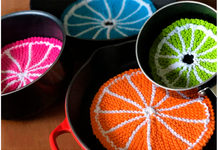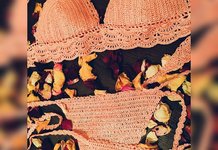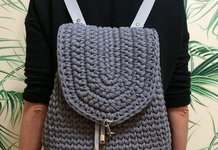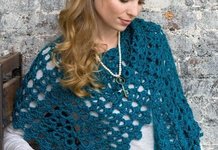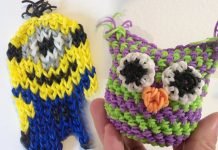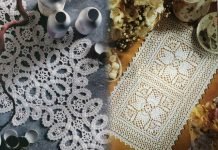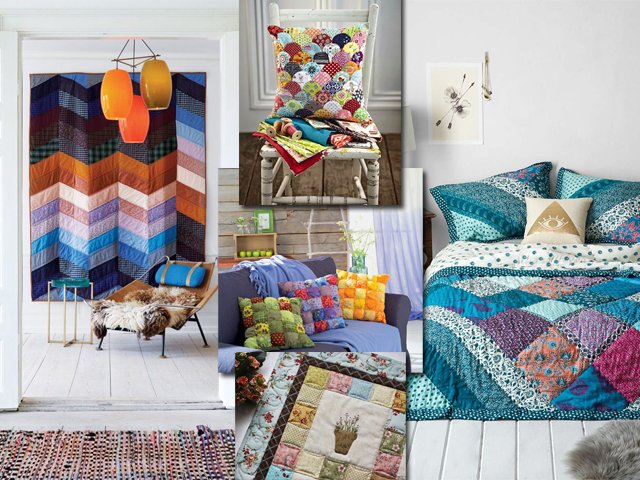
A very beautiful and affordable variety of handmade is patchwork, also called “patchwork”. This type of needlework, which came to us from England several centuries ago, still successfully captures the hearts and hands of creative and creative hostesses who love to combine business with pleasure. In this case, the patchwork makes it easy to get rid of cute fabrics that have accumulated at home, motley scraps of sewing, old favorite things that are simply impossible to part with forever.
It’s important in the patchwork observe a certain logic when forming a composition and drawing up its proportionsso that the product looks harmonious and is sustained in the same style. Having decided on the style and materials, you need to outline in the sketch exactly how the future thing will look. Mosaic, which will result from folded together fabrics, can be composed of a variety of paintings, but it is better if the colors will be successfully combined, including contrasting, and the texture of the fabrics will be similar. You can connect the flaps into a single whole by stitching them manually or using a sewing machine.

Patchwork varieties there are many, and the specifics of the work may vary depending on the region where they come from. The most common and popular variations of patchwork are:quilting, crazy and Japanese patchwork. Quilting, popular in the USA, differs from the patchwork technology by the presence of a quilted base and a cotton lining, which means that the volume of the patterns. Crazy is a patchwork combination of bright contrasting colors, unusual textures and elements on one thing, which, however, looks harmonious. The Japanese patchwork is the smoothness of the combination of color schemes of sewing; silk and cotton fabrics; Japanese sashiko embroidery technique (needle stitches forward); jewelry in the form of tassels or fringes.
Wherever the patchwork technique comes from, it helps to create:
- useful for home items of unique design and light pleasant style:
pillowcases for pillows, rugs, rugs, wraps, covers, children's toys, panels, curtains;
- useful textile items in the kitchen:
potholders, napkins, tablecloths;
- bright wardrobe components:
skirts, coats, dresses, sundresses, shirts, poncho, bags, wallets, cosmetic bags.
The result of the work will make noticeable adjustments to the interior and style of the needlewoman and her loved ones. In addition, a special thing made using the patchwork technique is an unforgettable gift that will delight friends and relatives for many years to come.
Guided by the taste and desire to create something new and useful, you can create a real work of local art from old and unnecessary fragments of your personal history. It is only necessary to familiarize yourself with a few basic patchwork rules in advance, and you can safely get down to business. Remember, even if this will be the first work in this style, there is nothing terrible and incredibly complicated in this - the schemes and job descriptions will help in this.
Master class “patchwork for beginners”

Before studying the patterns of working with products using the patchwork technique, beginner needlewomen need to familiarize themselves with the general features of this handmade technique. These are the exact stages of the work that you need to follow no matter which product the craftswoman wants to sew from the flaps.
- Planning for the future patchwork style
The initial stage of the entire work will be an exact definition of its boundaries: what kind of product is this, and how do you see it? Then a primitive sketch is drawn up with an exact ornament, pattern and distribution of patterns, and a scheme is outlined, according to which a new thing will be “born”. It’s better for beginner patchwork masters to work according to ready-made schemes, this will save you from possible errors and unnecessary work.
- Fabric selection and preparation
The charm of the patchwork lies in practically waste-free production - that is, you can use littered fabrics, clothes, tablecloths - anything you want. You can also refresh the ornament with some new fabric with a special pattern. The type of fabric is selected depending on the future thing: if it is clothing, then it is advisable to use natural light fabrics, if the household item, then choose dense and durable materials. For the classic character patchwork, the same or similar texture of all shreds.
Having chosen the fabric, it must be prepared for further work: wash and iron with steam.If necessary, you can also starch the fabric.
- Template making
To correctly calculate the borders of fabric flaps, you should use a template - a pattern of a detail of a patch of the required shape. It can be purchased in specialized stores, or made on their own. Templates are made of cardboard or thick paper in the form of square or other suitable frames in the form, the upper boundary of which will indicate the boundary of the seam allowances. Then a small indent is made for the inner border of the frame and a second outline is drawn - it denotes normal flap size. Beginners need to do this without fail, marking on the fabric with a pencil both borders of the template: external circuit needed for cut line branches, but internal for the line connecting the seam with other shreds.
- The technique of cutting individual flaps
The finished template is applied to the back of the fabric and outlines both its borders with chalk, soap or pencil. According to the template of a suitable shape and size, the desired flaps are cut. It is important to remember that the fabric is cut in the direction of the shared thread.
- Connection of fabric parts to the finished product
Later, when the flaps are ready and laid out in the correct sequence, they will need to be sewn along the inner contour of the patterns. The most dense patterns are pre-fixed on the lining and stitched. If the parts have no allowances, then the patterns are immediately sewn onto the seams.
- Features of the connection of flaps
Even on this issue, needlewomen have a large selection of options for stitching fabrics for the future item in the patchwork style. There are a lot of flap connecting techniques that comes with every new fashion trend, but here are the main and most popular among beginners and experienced craftswomen:
- Squares (either square patterns, or the compilation of different forms of flaps of squares);
- Strips (strips of different colors and sizes are sewn in parallel or in a circle);
- Triangles (either isosceles triangles sewn together, or the formation of concrete patterns of a different shape from triangles are relevant here);
- Honeycombs (as a result, hexagonal flaps form a kind of honeycomb, also called "grandmother's garden");
- Lapachikha (a complex patchwork technique using rags with rough edges, which should be folded into a chaotic and complex pattern, while creating a three-dimensional effect).
How to sew a blanket?

So, having decided on the choice of things, you can proceed with specific actions, namely, work on the scheme of manufacturing things. Those who want to sew a patchwork blanket with their own hands should adhere to the following simple recommendations.
Important: beginners are advised to start working in the patchwork style with square rags - this is the simplest option, which does not require too much attention and patience from an inexperienced master.
- Preparation for sewing patchwork style bedspreads
We answer the following questions that will help you plan your work accurately:
- What future bedspreads should be in size?
- For what room is it sewn? What is its style and color scheme? Does the style of bedspreads and rooms match?
- What pattern will be depicted on the bedspread? What are the best patches to hold together?
Getting ready to get started:
- We draw a sketch and our own scheme of the future patchwork bedspreads (or act on the models of experienced craftswomen);
- We select fabrics for the main pattern and for the lining and the underside of the bedspread, prepare the materials for work (we wash, starch, iron);
- We prepare the necessary tools for the work: ruler, scissors, needles, threads, pins, sewing machine, chalk or pencil;
- Cut out patterns for flaps.
- Creating fabric patches
We take pieces of fabric and cut equal squares from them according to the first pattern - with the contour of the indentation for the fabric stock, after which we mark the internal borders of the pattern on the fabric - with the contours for future stitches (follow the recommendations from the paragraph “making a pattern” above), marking them with a pencil on tissue;
- The main job of sewing patchwork bedspreads
- We take two shreds of fabrics with different patterns (according to your scheme and sketch), put them together on the wrong side, sew them exactly according to the marks of the contour for the seams. We smooth each freshly sewn seam with an iron. We attach the next flap, or two flaps sewn together, creating a single canvas.
- Now you need to connect the finished stitched squares to the wrong side. Since this is a blanket, there should not be an inside in the form of a synthetic winterizer or batting. First you need to put the fabric of the wrong side of the bedspread (whether calico or cambric) face down, cover with the finished patchwork cloth face up, fasten them with pins. Now quilt the almost finished bedspread on a typewriter along the border of square shreds.
- We perform product piping in the style of patchwork. To do this, take a strip of fabric slightly longer than the desired side of the bedspread, fold it in half, attach things to the edge of the front side and sew on (wrap the excess edges of the border and sew again on the front side, making a neat edge). Repeat for all sides.
DIY baby blanket

To make a children's blanket in the style of a patchwork, you can adhere to the same scheme of work as when performing the bedspreads, only it is worth taking care of a warm lining.
Quilt for children in the style of patchwork is usually made in a bright, or vice versa, in a calmer, gentle style, so that the baby feels in comfort and warmth before going to bed. Let's try to ease the work a little for beginners who have yet to discover the wonderful world of handmade patchwork and make a baby blanket according to a simplified scheme.
- We will prepare for this: 4 types of pre-prepared fabric for the flaps; fleece; threads needles; pins sewing machine; scissors; a ruler; ready-made templates.
- From the flaps according to the finished templates, we cut out 48 squares (8 cm side, along with the indent from the future seam).
- Squares are sewn together, fresh seams are constantly carefully ironed.
- Stelem on the working surface of the fleece, put a synthetic winterizer on top of it, you can fasten them with pins or gently sweep with your hands.
- Now you need to stitch all three paintings along the edges with an indent of 1 cm.
- You should also quilting all the paintings on a typewriter along the border of square shreds.
Master class - patchwork mosaic

A distinctive part of patchwork art is patchwork mosaic.Regardless of which direction the patchworker chose, what pattern and style of patchwork she likes, the patchwork mosaic is an integral part of the work - that is, combining several parts of the picture together. It is the creation of mosaics - the composition of flowers, textures and textures, and stitching into a single ensemble of flowers, patterns and ornaments - that is how attracts creative people who choose the patchwork as their favorite pastime.
Let's try to track the process of creating a simple mosaic using the example of a small block from the beginning to the connection of all elements of the picture.

So, we choose a straightforward pattern in the form of triangles and squares. We make an accurate sketch of the mosaic in compliance with the proportions. We draw a large square of smaller squares measuring 6 × 6 figures. Inside these squares we make an ornament of triangles of supposedly different colors. The result should be 64 triangles and 4 squares forming a mosaic pattern.
To ease our task and speed up the process, forget about cutting out this incredible number of triangles and try apply high-speed assembly of the patchwork block of squares. On a sketch drawn in advance, measure the side of the triangle. After that, on graph paper we make two triangles parallel to each other, adding an allowance of 6 mm on all sides, resulting in a square. Thus, two solid squares are four multi-colored triangles. Here, the calculation of the required number of squares depends on the number of fabric colors chosen by the master, as well as on their distribution according to the sketch.

After calculating the required number and cutting out the squares according to the pattern, we fold the squares of different colors one after the other face down, divide the upper shred with diagonal, chalk, marker, pencil or soap into two triangles. According to this mark, we retreat by the amount of the allowance first in one direction, making a line there with a sewing machine, thereby flashing several multi-colored rags, then in the other direction. Now you can free the finished stitched squares from multi-colored triangles by cutting shreds along the previously drawn transverse line. After this, it is necessary to walk the iron along the allowance line, as well as get rid of excess tails on the tissues.

From the two-color squares we make the desired patchwork style mosaic, and now we divide the squares into long lines, which we then sew into horizontal stripes. The final touch - we sew horizontal stripes into a finished mosaic.
Knitting Technique

In addition to patchwork, the patchwork can offer all-rounders a variety of patchwork knitting. You can knit beautiful things in the patchwork style with knitting needles or crochet. It is believed that making bedspreads, plaids, tablecloths, and capes using the patchwork technique is quite simple - geometric shapes are knitted according to simple patterns and then connected to each other.
In the case of patchwork, very often colorful bright yarns, floral motifs, a visual game with geometric figures, wave-like patterns on the canvas and much more are used, which allows needlewomen to fully apply their skills and ideas.
There are several ways to connect finished related shapes.: finished rags of yarn are sewn into a single piece of fabric at the very end; interconnected gradually right during the knitting of the patchwork.
Let's see how it works with a simple example - patchwork style bedspread.

The easiest option is to tie a blanket of squares. To connect one component of the patchwork style bedspread, you need to put on the knitting needle the required number of loops. To create a square with a width of 15 loops, we need to create a row of the 31st (15 + 1 + 15). It is understood that one loop will create the corner of our future square.
The loops should be knitted face on each side.
When creating the second row, make a decrease: instead of the front, tie three loops together in the center. So that the edge of the figure has nodules, remove the first loop from the knitting needle and knit the last one. When the three loops are reduced, cut and lock the thread by pulling through the end loop.
The next step in knitting a patchwork with knitting needles with a description is the creation of a second geometric element. Traditionally, it is necessary to string 15 new loops and 16 additional loops on the edge of the already created square: pull the needle over the edge and extend the loop. When creating this element, reduce the central loops in each second row, as in the formation of the first square.
Important: Count in advance how many squares of a given size you need to knit to get the product with the desired width. All other squares in a row are tied to already created ones.
Crochet pillows

There are some advantages to crocheting in the patchwork style, especially if the needlewoman has sufficient experience in this kind of handmade. But if we talk about the patchwork for beginners - the schemes will step by step help to cope with any difficulties, do not worry.
When crocheting things using the patchwork technique, delicate and beautiful tablecloths, wraps, pillowcases, and also clothes are obtained. All this can be performed both in a simple form and in a more interesting way - with openwork motives, for example. You can often find crocheted flowers and patterns connected in a single multi-colored fabric. These details also add to the knit patchwork.
Let's take a closer look in this article, what a crocheted patchwork pillow might look like. More precisely, we will talk about the scheme and description of the execution of pillowcases crocheted.
For one side of the pillow you need to knit 25 squares. First, we connect a 10 × 10 square using a step-by-step scheme. We will need yarn of several colors and hook number 4.
Abbreviations used in the scheme:
- at. P. - air loop;
- hp - front side;
- ssn - double crochet;
- psbn - half-crochet without a crochet;
- prom - gap;
- rep. - repeat;
- track. - next;
- every - everyone.
Working process:
- Tie the pink circle, rotate it with your face towards you, insert the hook into the 1st corner space and pull the thread through it - 1 loop will appear on the hook. Now tie 3 in. n. - count them as the 1st crochet column.
- Tie loops over the short end of the thread in order to fix it, tie 2 columns with a crochet, 2 in. sts. and 3 double crochets - all in the same span to make the 1st corner.
- Tie 1 in. p., then 3 double crochet, 2 in. p. and 3 double crochet - all in the next interval to get an angle. Repeat 2 more times - you should get 4 corners. Complete the circle by completing a half-crochet in the 3rd century. P.
- Go to the 3rd circle by connecting the single crochet half columns in the first 2 double crochets and the 1st corner gap. Now tie 3 in. n., considering them the 1st column with a crochet.
- Tie the 1st corner, then 1 in. st. and 3 double crochet in the next interval. Continue knitting in a circle, knitting the corner group in each corner gap and adding 3 double crochet stitches between the corner groups. Perform a single crochet in the 3rd century. item and fasten the thread.



Assembling squares in a single product:
- Using the main color of the yarn, sew small squares together, gathering the front detail of the pillowcase. Sew squares first in rows - 5 rows of 5 squares, referring to the assembly diagram, starting from the upper right square. After that, sew the strips by making vertical seams, additionally making 1 column in each gap on both sides of the horizontal seam.
- To connect the front and back parts of the case, fold both parts with the wrong sides inward.Connect the parts by making a series of columns along the outer edge of the parts, and three columns in the corner sector. Having connected the three sides of the cover, insert the pillow and close the hole (either with a column, like the other sides, or you can sew buttons or zippers in this place).

Video lesson
To facilitate the work and avoid possible mistakes in the work, you can take advantage of the experience of experienced admirers and patchwork artists and watch not only photo master classes, but also videos that help to cope with this difficult, but very interesting thing.
In this case, the master works with triangles, which are then sewn into a beautiful floral square. Such a mosaic looks great on large items like blankets, bedspreads, tablecloths, rugs.
Video lesson “patchwork for beginner needlewomen” - MK
And here's how to flash all layers of the finished product:



